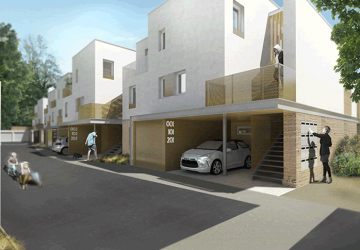- Published on
Welcome to Pre Home: Revolutionizing the Future of Eco-Friendly and Cost-Effective Living Spaces
Welcome to Pre Home: Revolutionizing the Future of Eco-Friendly and Cost-Effective Living Spaces
At a time when instability plagues the real estate market, a game-changing idea, known as the 'Pre Home' model, is making a significant impact. This emerging term in property and architectural circles denotes a home solution that is both eco-friendly and wallet-friendly, and it is quickly gaining traction as a frontrunner in how we approach both constructing and owning homes. This article explores the myriad ways in which Pre Homes could fundamentally reshape the residential property sector.

Pre Homes are essentially prefabricated units, built partially at a site other than their final location and subsequently transported and fully assembled on-site. By manufacturing these homes in controlled settings, the model streamlines the construction process, mitigates waste, shortens timelines, and brings down expenses for potential homeowners. Sustainability is a cornerstone of the Pre Home's appeal. The construction sector is notorious for its hefty carbon footprint, but Pre Homes provide a greener alternative. Eco-conscious materials are given preference, and the controlled factory environment allows for more effective material management and reduced waste. Moreover, these homes are inherently designed to include energy-saving elements such as solar panels, advanced insulation, and intelligent home systems to minimize residents' environmental impact. Affordability is another critical advantage associated with Pre Homes. Traditional home building is fraught with financial unpredictability, with projects often going over budget due to various unforeseen factors. The Pre Home model sidesteps these issues through its predictable, streamlined process that typically results in cost savings for homebuyers. As a result, homeownership becomes more attainable for wider demographics, including younger buyers and first-time purchasers who might find conventional housing options prohibitively expensive. The time efficiency of constructing a Pre Home is yet another benefit. With parts being manufactured while the building site is being prepared, the overall timeline from beginning to end is drastically compressed. This translates to homebuyers being able to transition from closing the deal to occupying their new homes much more swiftly, cutting down the interim period of renting. Design versatility is yet another draw for Pre Homes. Departing from the monotonous prefab designs of earlier generations, the modern Pre Home boasts various architectural styles and customization options. This level of personalization means homeowners no longer need to sacrifice individual taste or needs to avoid the heavy costs associated with custom-built homes. Despite their numerous advantages, Pre Homes still face several hurdles, including restrictive zoning laws, strict building codes, and skepticism about prefab quality and durability. To fully integrate Pre Homes into the housing market, regulatory bodies will need to modernize their frameworks. Industry leaders are also striving to overcome outdated stigmas by showcasing the technological prowess and design superiority of these structures. On the technological horizon, Pre Homes are positioned to lead with potentially groundbreaking innovations. The sector is ripe for incorporating smart systems, utilizing avant-garde construction materials and methods, and possibly even revolutionizing the industry with IoT-enabled homes, 3D-printed components, and robotic building processes. In essence, the Pre Home paradigm is at the vanguard of transforming the housing industry. Offering resolutions to issues such as ecological impact, affordability constraints, and prolonged construction periods, Pre Homes symbolize a shift towards more sustainable and attainable housing. As we witness continued advances in technology and evolving societal attitudes favoring sustainable practices, Pre Homes are poised to set new benchmarks in housing. The path to more eco-friendly and accessible homes is being forged with every modular unit that comes into being.